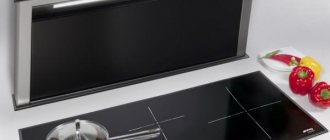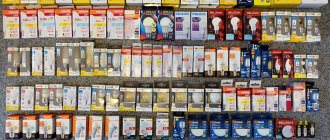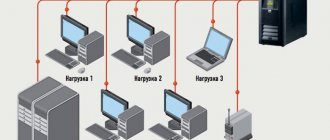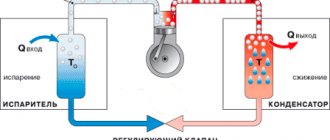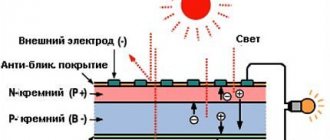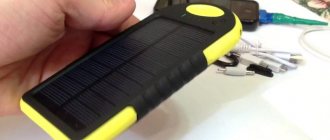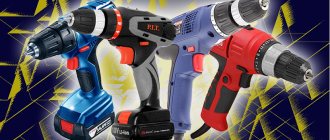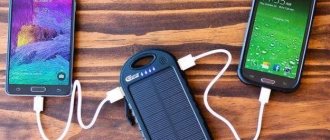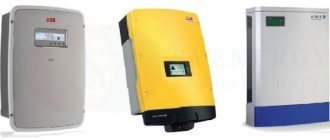The sun is an inexhaustible source of environmentally friendly energy. For a long time, humanity perceived the sun as a source of heat and light, without thinking about using it more fully for its own purposes. With the development of new technologies, it has become possible not only to more fully use the solar energy, but also to accumulate it. Initially, the use of solar energy technologies was limited by the high cost of components and low productivity. Now, with the increase in the efficiency of solar systems and their gradual reduction in cost, it has become possible to use this energy source for domestic purposes on an individual basis.
Anyone, after weighing the pros and cons, can switch to using environmentally friendly solar energy and stop depending on the centralized power supply network. This is especially true when the country house is located far from power lines. In addition, solar systems can be used as an additional (backup) source of energy, protecting yourself from power outages.
Panels differ in production technology, quality, method of use, and many other parameters. Let's try to understand this variety of solar modules offered and highlight the best of them.
Types of solar panels
A solar panel is an interconnected photovoltaic cell that converts the sun's energy into electrical current.
According to the production technology of photocells, all solar panels are divided into two large groups: silicon and film. Their types and features will be discussed below in the table.
| Group | Type | Peculiarities | Efficiency, % |
| Silicon | Monocrystalline (mono-Si) | They represent one silicon crystal. They have a square shape with rounded corners. Color gray or black to blue (with anti-reflective coating). Direct solar radiation is best converted. The most expensive. | from 15 to 22 |
| Silicon | Polycrystalline (poly-Si) | A block of silicon crystals interconnected. They have a square shape. Color: silver gray or blue (with anti-reflective coating). The absorption capacity of direct solar radiation is worse. It is better to use it to generate energy from scattered radiation. Cheaper than single crystals. | from 12 to 18 |
| Silicon, film | Amorphous | They occupy an intermediate position, because made of silicon, but in the form of a film. They represent the deposition of a silicon semiconductor onto a base. Convenient to use. Within six months to a year they burn out in the sun, and therefore their power decreases. | from 5 to 6 |
| Film | Based on cadmium telluride | They look like a film that is applied to glass. Mirror dark green or black. Most often used in space and in Earth orbit. Toxic: they release harmful cadmium. Difficult disposal. | from 10 to 12 |
| Film | Based on CIGS (copper indium selenide) | They have the form of a film in which copper-indium selenide is used as a semiconductor. Color ranges from dark gray to black. Subject to corrosion. | from 15 to 20 |
| Film | Polymer | They look like a very thin film. Cheap to produce and do not emit harmful substances. | from 5 to 6 |
Now, focusing on the types of solar panels, let’s consider in what areas of human activity each of them is used.
Types and principle of operation
A solar panel is an interconnected photovoltaic cell that converts the sun's energy into electrical current. According to the manufacturing method, solar panels are divided into two types:
- Silicon . The operating principle is based on the semiconductor effect. Silicon is one of the most efficient semiconductors known to mankind at the moment. When the solar cell (the top silicon wafer of the converter block) is heated, electrons from the silicon atoms are released, after which they are captured by the atoms of the bottom wafer. Accordingly, electrons from the lower plate move along conductors (connecting wires), giving up their energy to charge the batteries and returning to the upper plate.
- Film . They are slowly gaining their own position through use and elasticity. Experts attribute the disadvantages of film panels to low power, susceptibility to atmospheric influences, and high cost. Such modules can be cut with a knife and go around uneven bases.
Application area of solar panels
Stationary panels
Solar panels can be used both in stationary conditions and be portable.
Fixed modules are used in the following areas:
- at solar power plants;
- in autonomous, backup or hybrid power plants for home or garden;
- for space heating and water heating (solar collector);
- in autonomous street lighting systems;
- for powering billboards;
- in navigation and alarm systems;
- in pumping stations, etc.
Considering stationary solar power plants, let us dwell in more detail on those that are used to supply electricity to a home. To provide your home with electricity using solar energy, you will need the following components:
- solar modules;
- battery (for storing unused energy);
- voltage controller (increases battery life, but is not required for installation);
- inverter (converts the direct current of the battery into the necessary alternating current for electrical appliances).
Home solar power plants in relation to centralized power supply can be:
- autonomous.
Autonomous, i.e. Independent of other power sources, solar power plants are used where it is impossible for certain reasons (considerable distance from populated areas) to connect to the general power grid. Their use is advisable in southern regions, where daylight hours are longer and there are a large number of clear days. In any case, it is advisable to duplicate it with a generator running on combustible fuel. The main advantages of an autonomous station are its environmental friendliness, noiselessness, and minimal maintenance during operation. The downside is that no electricity will be generated at night or on cloudy days. In addition, their operation requires the above-mentioned components, which make the autonomous system quite expensive.
- reserve.
Backup, or network, power plants are installed where there is a connection to the central electrical network. It is used as an additional source of electricity. A backup solar power plant starts operating in the event of a power outage from the grid. Advantages: noiselessness, reliability, possibility of installation on the roof or facade of a building. Another advantage is the absence of a battery, controller and inverter, which significantly reduces the cost of the system.
- hybrid.
In essence, it is an autonomous station connected to the electrical network. The energy received from the Sun is used first of all; in case of its shortage, the electricity supply comes from the centralized power supply. Allows significant savings on payments for consumed electricity.
Mobile modules
Mobile devices for converting solar energy into electric current can be used:
- for charging mobile phones and other mobile devices;
- for powering radios during hiking and fishing;
- to power navigation systems during expeditions;
- for lighting at night during hikes.
Portable batteries have become an indispensable accessory for backcountry enthusiasts and tourists traveling to wild places where there is no electricity. Since modern life, even on a desert island or in the mountains, is impossible without various gadgets, they are recharged from chargers that convert solar energy. Portable solar panels are most often produced on the basis of monocrystalline silicon. They differ in size, shape, power. Compact batteries with low power can fit in a pocket, while large and powerful ones can be installed on the roof of a car. In addition, they are equipped with all kinds of adapters for connecting various equipment.
Where are they already used and for whom are they relevant?
Solar panels on the roofs of private houses
The modern world has long been using FSE on an industrial scale, this is especially true for countries where sunlight is active most of the year. Today, thanks to the falling prices for this equipment and the rising cost of electricity, some of them use private homes and cottages as the main or additional source of energy.
What about apartments?
? Everything is more complicated here; firstly, there is not enough free space to install the panels. Secondly, this is difficult to coordinate among various supervisory authorities.
In general, this problem can be solved, but installing equipment in an apartment building will cost much more than in a private house.
What to look for when choosing solar panels
Due to the fact that the use of solar energy for domestic purposes has not yet become commonplace, and the choice of solar panels causes certain difficulties, we offer a list of the most important parameters. So, when purchasing such a module, you should pay attention to the following points:
- manufacturer.
It is important to pay attention to how long this manufacturer has been present on the market for this product, and what its production volume is. The longer a manufacturer has been in this industry, the more you can trust him.
- area of use.
For what purposes will the resulting energy be used: for charging small equipment, for powering large electrical appliances, for lighting or for full power supply to the house. The choice of output voltage and power of the panels depends on the purpose for which the solar module is purchased.
- voltage.
For small electrical appliances, 9 V is enough, for charging smartphones and laptops - 12-19 V, and to provide the entire energy system at home - 24 V or more.
- power.
This parameter is calculated based on average daily energy consumption (the sum of energy consumed by all equipment per day). The power of solar panels should cover consumption with some margin.
- quality of photovoltaic cells.
There are 4 quality categories of photocells that make up a solar panel: Grad A, Grad B, Grad C, Grad D. Naturally, the first category is best - Grad A. Modules of this quality category do not have chips and microcracks, are uniform in color and structure, have highest efficiency and practically not subject to degradation.
- life time.
The service life of solar panels varies from 10 to 20 years. Of course, the duration of full operation of such a power system depends on the quality of the batteries and the correctness of their installation.
- additional technical parameters.
The most important are efficiency, tolerance (permissible power deviation), temperature coefficient (the effect of temperature on battery performance).
Having understood the main technical characteristics, we offer you a rating of the best solar panels in 2022.
How do solar panels work for a private home?
The principle of operation of solar panels is quite simple. The sun is heated by an absorber in the collector, which absorbs solar radiation and converts it into heat. Subsequently, the coolant heated in the absorber (most often water or antifreeze) enters the service water tank and transfers heat to the water.
There are two types of collectors on the market: flat and vacuum. The first ones look like a dark sheet. They have high-strength glass on top and insulating mineral wool on the other sides. The vacuum manifold, in turn, consists of vacuum tubes located parallel to each other. Here the absorber is divided into strips placed in pipes.
Flat models are cheaper but lose a lot of heat in the colder months. Vacuum pumps are better at insulating heat when it's cold outside. However, they are more expensive and more complex. However, they are more popular in Russia, since at a higher cost they can be expected to provide more heat than flat-plate collectors in adverse weather conditions.
In addition, manufacturers of vacuum manifolds distinguish between pressure and non-pressure models. In the first case, the water in the tank is under constant pressure. Thanks to this, the pressure of hot water supplied to the taps is the same as in the water supply system, and the collector can be located in any sunny place. In contrast, in free-flow collectors there is no pressure in the tank. Water flows out of the tank under the influence of gravity. Such collectors should be placed on the roof.
The best solar panels
Delta SM 150-12 P
Polycrystalline battery with a nominal power of 150 W and a voltage of 12 V, consisting of 36 photocells. In its manufacture, elements of the first quality category (Grade A) were used. The panel is aimed at collecting scattered solar energy in cloudy weather and the cold season. The operating temperature of the module is in the range from -40 to +85°C. Normal operating temperature without power loss is +47°C. The power temperature coefficient is -0.45%. Photoelectric conversion efficiency (PEC) 17.12%. The warranty period is 10 years. Manufacturer – China.
Cost from 5950 rub.
Delta SM 150-12 P
Advantages:
- high performance even in completely cloudy conditions;
- high transparency tempered glass;
- Durable aluminum profile and rigid construction protect the panel from deformation.
Flaws:
- decrease in power as temperature rises.
Exmork FSM-100P
Polycrystalline silicon module of 36 cells with a nominal voltage of 12 V and a nameplate power of 100 W. Quality class - Grade A. Operating temperature range from -40 to +80°C. Normal operating temperature is +45°C. The efficiency of the photovoltaic cell is within 17.3%. The warranty on the panel is 10 years. Battery manufacturer - China.
Cost: from 4000 rub.
Exmork FSM-100P
Advantages:
- glass light transmittance 97%;
- Tempered glass can withstand even large hail;
- withstands wind speeds of 60 m/s;
- service life declared by the manufacturer is at least 30 years.
Flaws:
- not found.
TOPRAY 100 watt 12V
Monocrystalline silicon flexible solar panel. Voltage 12 V, power 100 W. The battery consists of 32 cells. Photovoltaic cells have a Grade A quality category. Their conversion efficiency can reach more than 20%. Temperature operating conditions from -40 to +85°C. The service life with proper use reaches 20 years. Manufacturer – China.
Cost: from 9960 rub.
TOPRAY 100 watt 12V
Advantages:
- thin and light;
- effectively converts direct radiation from the Sun;
- works effectively in cold weather.
Flaws:
- Applicable only for direct radiation.
Feron PS0303 150W
A portable panel with a maximum power of 150 W and an output voltage of 17.6 V. Designed to power electrical appliances designed for a voltage of 12-14 V, as well as to charge car batteries. Operating temperature from -40 to +85°C. Warranty period: 3 years. Made in China.
Cost 18,700 rubles.
Feron PS0303 150W
Advantages:
- folding model, easy to transport;
- The PWM controller is equipped with LED indication of the charge level and connected load;
- the battery is protected from overcharging, overdischarge and overload;
- Carrying bag included;
- It is possible to charge mobile devices via a USB connector.
Flaws:
- short warranty period.
Delta SM 200-12 P
Solar panel made of polycrystalline silicon with a power of 200 W and a voltage of 12 V. Silicon elements belong to quality category A. The photovoltaic module includes 72 cells. The operating temperature ranges from -40 to +85°C. The most optimal temperature for operation without loss of power is +47°C. The efficiency of photoelectric conversion of the element is 17.4%, of the entire module - 15.5%. The warranty period is 10 years. Manufacturer – China.
Cost: from 8800 rub.
Delta SM 200-12 P
Advantages:
- power loss over 10 years no more than 10%;
- durable tempered glass 3.2 mm thick;
- effectively converts scattered solar energy.
Flaws:
- not found.
SOLAR.BATTERY 30W
Solar panel with mounting power of 30 W and voltage of 12 V. Operating temperature from -40 to +50°C. Designed for use as a backup power source. Warranty: 1.5 years. Service life – 10 years. - Russia.
Cost: from 7600 rub.
SOLAR.BATTERY 30W
Advantages:
- the swivel bracket allows you to rotate the panel following the movement of the sun;
- can be used at 100% air humidity;
Flaws:
- The manufacturer does not indicate the type of photocell.
BioLite SolarPanel 5
5W monocrystalline solar panel. Has two outputs: USB and micro USB. Manufacturer: USA, assembled in China.
Cost: from 5690 rub.
BioLite SolarPanel 5
Advantages:
- the stand allows you to install the battery on various surfaces;
- built-in sundial helps to adjust the optimal angle of the panel;
- There is an indicator showing the charge strength.
Flaws:
- not found.
Feron PS0401
Portable rechargeable solar panel with lithium-ion battery. Operating temperature +10 - +45°C. The nominal voltage of the module is 9 V, power 3 W. Manufacturer – China.
Cost from 2900 rub.
Feron PS0401
Advantages:
- The kit includes 2 light bulbs, a power supply and various cables necessary for charging mobile devices;
- compact, convenient to take on a hike or fishing;
Flaws:
- narrow operating temperature range.
NESL AM-SF7
Mobile compact folding solar system. Consists of a folding panel and a storage device (powerbank). The solar panels are sewn into a case made of thick synthetic fabric. The panel has a USB output that can be used to charge small mobile devices or connect a storage device. Temperature conditions for use are from -20 to +50°C. The solar energy conversion efficiency is more than 17%. The service life can reach 20 years. Manufacturer – China.
Cost from 3990 rub.
NESL AM-SF7
Advantages:
- storage capacity 6000 mAh;
- The kit includes a cord for phones with different connectors;
- Ideal for relaxing in places without energy sources.
Flaws:
- A powerbank cannot charge from solar panels and power any device at the same time.
Solar Pack SW-H05
This model is a portable charger. This solar panel, according to the manufacturer, has high performance and efficiency of 18.5%. USB 5 output allows you to charge various phones, video and photo cameras, iPhone, IPOD, etc.
Cost: from 1300 rub.
Solar Pack SW-H05
Advantages:
- compact;
- stylish;
- Convenient to use when outdoors.
Flaws:
- There is very little information about this product on the Internet.
TOPRAY Solar TPS-102-15
Portable solar battery based on thin film technology. Photocells absorb solar energy not only from direct rays, but also from scattered radiation in cloudy weather. The battery is housed in a durable aluminum case, and the outside is covered with double impact-resistant glass. This model is aimed at charging batteries (12 V), as well as powering household electrical appliances. Manufacturer: China.
Cost: from 4680 rub.
TOPRAY Solar TPS-102-15
Advantages:
- minimal power loss when heating;
- Battery clips and adapters included.
Flaws:
- not found.
Comparison of technical characteristics of the considered models
| Model | Rated voltage, V | Rated power, W | Efficiency | Dimensions, mm | Weight, kg |
| Delta SM 150-12 P | 12 | 150 | 17,12 | 1485x668x35 | 11,6 |
| Exmork FSM-100P | 12 | 100 | 17,3 | 1000x670x35 | 8,8 |
| TOPRAY 100 watt 12V | 12 | 100 | 20 | 1100x570x2.5 | 2,2 |
| Feron PS0303 150W | 17,6 | 150 | 17 | 1340x780x35, folded 664x758x75 | 15,1 |
| Delta SM 200-12 P | 12 | 200 | 15,5 | 1330x990x35 | 16,4 |
| SOLAR.BATTERY 30W | 12 | 30 | 540x430x150 | 5,6 | |
| BioLite SolarPanel 5 | 5 | 257x208x24 | 0,34 | ||
| Feron PS0401 | 9 | 3 | 220x135x17 | 0,9 | |
| NESL AM-SF7 | 5 | 7 | 17 | 250x480, folded 25x17x1 | 0,44 |
| Solar Pack SW-H05 | 5 | 5 | 18,5 | 227x196x10 | 0,12 |
| TOPRAY Solar TPS-102-15 | 12 | 15 | 970x340x20 | 5,5 |
What can you get from solar panels?
Providing your home with heat and hot water for free, only using solar energy, is a possible scenario, but you need to understand that this is not a year-round solution.
The fact is that at our latitude there is an uneven distribution of sunlight throughout the year. In Russia we can only enjoy the beautiful sun during a few summer months. In turn, from autumn to early spring, the rays have to break through thick clouds. Consequently, the use of solar energy is limited during this period.
For this reason, solar panels can only fully satisfy the task of heating a house in the summer months. In the remaining months, they will only slightly keep the house warm.
In any case, by installing such a system on the roof, we will be able to use hot water for free for 5-7 months a year, which will certainly be a significant relief for the family budget, not to mention environmental protection.
Which is better, monocrystalline or polycrystalline?
Photovoltaic panels intended for residential construction are most often made from silicon cells. They can have a monocrystalline or polycrystalline structure, and they are distinguished by their efficiency. Many people do not know which photovoltaic panel to choose so that it is energy efficient enough.
- Monocrystalline models are dark in color and consist of a monolithic cylindrical silicon crystal. Its diameter is about 30 cm. The efficiency of such panels ranges from 18% to 22%. According to experts, they are more durable than polycrystalline ones, but also more expensive.
- Polycrystalline models are made from a compressed block of crystallized silicon and are usually light blue in color (they show the edges of the crystals). The cells in polycrystalline panels are square, their efficiency is no more than 16%. They are less durable, but the durability of an installation made from polycrystalline panels is determined even for several decades. This is a cheaper alternative to monocrystalline cells.
If you don’t want to spend too much on purchasing panels, you can choose a model made from amorphous silicon elements. It has a high initial efficiency, which, however, drops relatively quickly during operation. To achieve the specified power of the entire photovoltaic installation, amorphous silicon panels must have a larger surface area than mono- or polycrystalline panels.
How to install and connect
Care must be taken when installing solar panels. Experts recommend contacting experienced installers: specialists will connect the panels and check for correct operation.
When installing panels, pay attention to several factors:
- Shadow - if the battery is completely in it, it will not produce enough energy and will fail in a short time.
- Orientation - Point the battery towards the sun.
- Tilt - Experienced experts recommend setting the tilt angle equal to the latitude in which it is located.
- Accessibility - over time, the panels become covered with a layer of dust, dirt, and snow. Accumulation may decrease. Regularly clean the panels from various types of deposits.
Choose the installation method - yourself or invite a specialist. The advantages of self-installation are saving money and gaining invaluable experience that may be useful to you in the future. But there are also disadvantages - you will lose your time, and in case of incorrect installation and, consequently, low battery efficiency, only you will be to blame. When contacting specialists, discuss the details of installation and connection with him in advance, and enter into an agreement on obligations and responsibilities.
A few words about domestic brands
We have named only 10 well-known manufacturers, popular in different countries and regions of the world. The needs of domestic solar energy are mainly covered by imports. But as solar energy develops everywhere, local manufacturers are also emerging. There are not many enterprises that produce solar panels in Ukraine. This process is slow, since the production of photomodules is knowledge-intensive and expensive, and it is not easy to compete with global brands. This is why solar panels are so expensive and there are few own factories in the country. Among the most famous companies we can name Kyiv and the oldest manufacturer of silicon wafers in Ukraine, the Enkhol enterprise (Energodar, Zaporozhye region), a plant in Vinnitsa (founded by KNESS Group), a small production based on the Promsvyaz enterprise (Odessa) and ( Alexandria, Kirovograd region) The geography of the regions where solar panels are produced in Russia is as follows. Here we can highlight the Telecom-STV company (Zelenograd), the Ryazan plant of metal-ceramic devices, the Saturn enterprise in Krasnodar, and the Kvant research and production enterprise (Moscow). But in neighboring Belarus, for example, there is virtually no own production of panels. However, in the fall of 2019, the German company Recom launched a panel production plant in this country in order to increase its European production capacity.
Film batteries
Unlike silicon, film solar panels are produced in rolls that can be rolled out over a large area. The composition of such a panel includes cadmium telluride or copper selenide. The main advantage of the film is the ability to cut it and adjust it to any size and shape of the roof. It also weighs much less than any silicon batteries and easily fits on any roof slope.
However, film solar panels have relatively low power and are easier to damage due to mechanical stress. Their efficiency is only 10%, which is much less than even polycrystalline modules. But thanks to their low price, film batteries have their own audience.
Monocrystalline silicon solar cells
Monocrystalline solar cells are electrically connected cells made from thin (240 micron) wafers of single crystal silicon. The optical axes are oriented in one direction, and a material of high purity (more than 99.99%) is used. This ensures maximum conversion efficiency. With a theoretically possible efficiency of 30% for a silicon element, in serial samples the figure reaches 18-24%.
Externally, monocrystalline batteries are easy to distinguish - they have a deep black color; during the cutting process, the element is given the shape of a regular square (rectangle) with cut corners.
The production technology of such solar cells holds the record for cost among silicon elements. The high production price is explained by the complex processes of purifying raw materials, growing a single crystal and cutting it precisely.
As a result, monocrystalline batteries have the highest price - about 0.9-1.1 dollars per 1 W of power.
Such elements also have another serious drawback - due to the precise orientation of the optical axes of the crystals, optimal returns can only be obtained when the sun's rays fall perpendicular to the plane of the element. With a significant change in the illumination angle, as well as in scattered light, a sharp decrease in generation is observed.
Operation of a hybrid solar power plant
After the launch of the solar power plant, my family and I revised many of our habits. For example, if previously the washing machine or dishwasher started after 11 pm, when the night tariff in the power grid worked, now these energy-consuming jobs are moved to the day, because the washing machine consumes 500-2100 W during operation, the dishwasher consumes 400-2100 W. Why such a spread? Because pumps and motors consume little, but water heaters are extremely power-hungry. Ironing also turned out to be “more profitable” and more enjoyable during the day: the room is much lighter, and the energy of the sun completely covers the consumption of the iron. The screenshot shows a graph of energy production from a solar power plant. The morning peak is clearly visible, when the washing machine was working and consuming a lot of energy - this energy was generated by solar panels.
The first days I went up to the inverter several times to look at the production and consumption screen. Then I installed the utility on my home server, which displays the operating mode of the inverter and all parameters of the power grid in real time. For example, the screenshot shows that the house consumes more than 2 kW of energy (AC output active power item) and all this energy is borrowed from solar panels (PV1 input power item). That is, the inverter, operating in hybrid mode with priority power from the sun, completely covers the energy consumption of the devices from the sun. Isn't this happiness? Every day a new column of energy production appeared in the table and this could not but rejoice. And when the electricity was turned off in the entire village, I found out about it only from the squeak of the inverter, which notified me that it was working in autonomous mode. For the whole house, this meant only one thing: we live as before, while the neighbors fetch water with buckets.
But there are some nuances to having a solar power plant at home:
- I started noticing that birds love solar panels and when they fly over them, they cannot help but be happy about the presence of technological equipment in the village. That is, sometimes solar panels still need to be washed to remove traces and dust. I think that if installed at 45 degrees, all traces would simply be washed away by rain. The output from several bird tracks does not drop at all, but if part of the panel is shaded, the drop in output becomes noticeable. I noticed this when the sun began to set and the shadow from the roof began to cover the panels one after another. That is, it is better to place the panels away from all structures that can shade them. But even in the evening, with diffused light, the panels produced several hundred watts.
- With high power of solar panels and pumping of 700 Watts or more, the inverter turns on the fans more actively and they become audible if the door to the technical room is open. Here you either close the door or mount the inverter on the wall using damping pads. In principle, nothing unexpected: any electronics heats up during operation. You just need to take into account that the inverter should not be hung in a place where it can interfere with the sound of its operation.
- The proprietary application can send alerts by email or SMS if any event occurs: turning on/off an external network, low battery, etc. But the application works on unsecured SMTP port 25, and all modern email services, like gmail.com or mail.ru, work on secure port 465. That is, now, in fact, email notifications do not arrive, but I would like to.
Not to say that these points are somehow upsetting, because one should always strive for perfection, but the existing energy independence is worth it.
